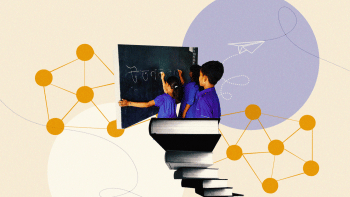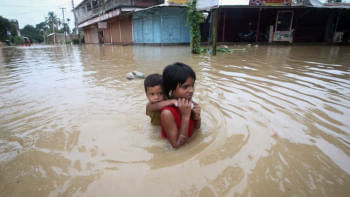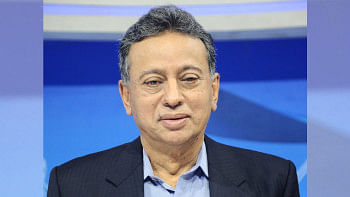Addressing the crisis of child malnutrition in Bangladesh

Even after more than five decades of independence, Bangladesh grapples with the alarming reality of widespread child malnutrition. Nearly one in four children in the country is stunted, meaning their height is far below the standard for their age. Twenty-two percent are underweight, while 11 percent suffer from wasting, which is a form of acute malnutrition. One in 10 newborns has low birth weight, undermining their long-term physical health and cognitive development.
Adding to this grim picture is the lack of healthy dietary practices. Over half of all the children in Bangladesh are deprived of exclusive breastfeeding during the first six months of life, and 72 percent receive inadequate complementary foods. Only one in every five children enjoys a diverse diet, while the rest rely on one or two types of food daily, which is insufficient to meet even their basic nutritional requirements. This nutritional deprivation severely impairs children's physical and mental development, resulting in poor educational outcomes, diminished productivity in adulthood, and greater vulnerability to illness. The cumulative economic loss is staggering—about $1 billion annually—a significant drag on national progress.
This crisis is not only a health sector issue. Child malnutrition is a multidimensional, cross-sectoral challenge. Addressing it requires strategic coordination among local government, civil society, and the private sector. These three key stakeholders must work together to pave a sustainable path forward.
Child nutrition begins in the womb and remains critical through the first two years of life. Proper nutrition during pregnancy determines a child's birth weight, growth, and immunity. Exclusive breastfeeding for six months provides essential nutrients and immune protection. After six months, children need age-appropriate complementary foods alongside continued breastfeeding up to two years or more.
To ensure healthy development, children's diets must include adequate calories, protein, vitamins, and minerals. Clean water, safe sanitation, immunisation, and personal hygiene are equally essential. These measures support nutrient absorption and protect against infection. Well-nourished children contribute more productively to society as adults. Investment in nutrition, therefore, is an investment in the future.
The roots of child malnutrition are deep and varied. Inadequate and undiversified food intake is a primary cause. Many children rely on staple carbohydrates like rice, with little or no protein or micronutrient-rich food. Lack of proper breastfeeding practices, either due to misinformation or sociocultural barriers, further compounds the problem.
Repeated occurrences of diarrhoea, pneumonia, and parasitic infections reduce nutrient absorption and appetite. Contaminated food and water, poor hygiene, and unsafe living conditions accelerate nutrient loss. Maternal undernutrition, both during pregnancy and lactation, leads to low birth weight and poor milk production, directly affecting child health.
Lack of knowledge among caregivers regarding feeding practices, widespread poverty, food insecurity, and social or gender discrimination also restrict children's access to nutritious food. Together, these factors not only undermine individual potential but also erode the foundation of national development.
Local government institutions, including union parishads, upazila parishads, and municipalities, are uniquely positioned to lead nutrition efforts at the grassroots level. They can promote community awareness, monitor food safety, support school-based nutrition education, encourage good agricultural practices, and expand immunisation coverage.
Yet, despite their strategic role, these institutions rarely allocate a budget for nutrition, particularly child nutrition. Government budget formats do not even list it as a category. The Right2Grow project, implemented in 40 unions across four coastal districts, demonstrates that targeted budget allocations and implementation can drive real progress in nutrition outcomes.
Civil society organisations and NGOs are vital partners in raising awareness, promoting breastfeeding, delivering nutrition to vulnerable populations, and supporting health workers. They can foster community engagement through participatory approaches and advocate for child nutrition at local and national levels.
One major barrier is political influence. For civil society to play an effective role, its work must remain impartial and driven by evidence, not agendas. Moreover, securing sustainable public financing for nutrition requires strong political commitment. Civil society must therefore lead robust advocacy to push child nutrition up the priority list of local and national governments.
Another critical role is budget tracking and monitoring. But insufficient access to data often hampers these efforts, threatening transparency and accountability in nutrition-related expenditures.
The private sector, too, has a transformative role to play. From producing and marketing safe and nutritious foods to funding school feeding programmes through Corporate Social Responsibility (CSR) initiatives, businesses can influence both supply and demand. They can support awareness campaigns, partner with the government and NGOs to produce low-cost, nutrient-dense foods, and invest in research and development of fortified staples—such as rice, lentils, flour, and edible oils—as well as micronutrient-enriched biscuits and seeds. Strengthening supply chains and training local entrepreneurs to deliver nutrition solutions to remote communities are additional avenues for engagement.
Through public-private partnerships, the private sector can also contribute to water, sanitation, and hygiene (WASH) and nutrition education, as well as introduce sustainable technologies that make healthy choices more accessible.
Child nutrition is not merely a health statistic—it is a national development imperative. It reflects our values, priorities, and commitment to the next generation. Only through coordinated, inclusive, and locally anchored action involving government, civil society, and the private sector can we ensure a healthier, smarter, and more resilient Bangladesh.
Dr Syed Abdul Hamid is professor at the Institute of Health Economics in the University of Dhaka and convener of Alliance for Health Reforms Bangladesh (AHRB) and Network for Health Care Excellence (NHE).
Views expressed in this article are the author's own.
Follow The Daily Star Opinion on Facebook for the latest opinions, commentaries and analyses by experts and professionals. To contribute your article or letter to The Daily Star Opinion, see our guidelines for submission.

 For all latest news, follow The Daily Star's Google News channel.
For all latest news, follow The Daily Star's Google News channel. 





Comments